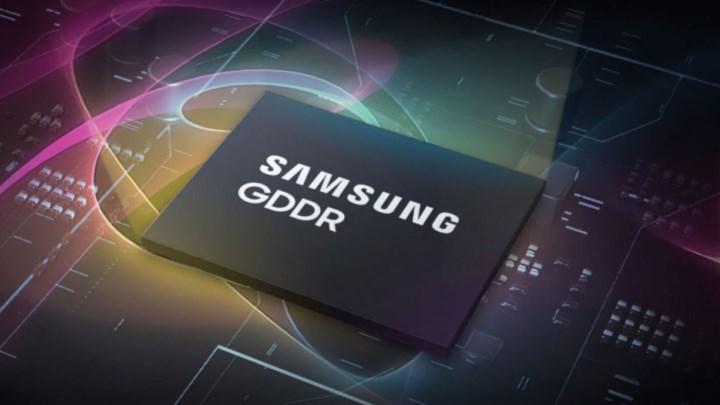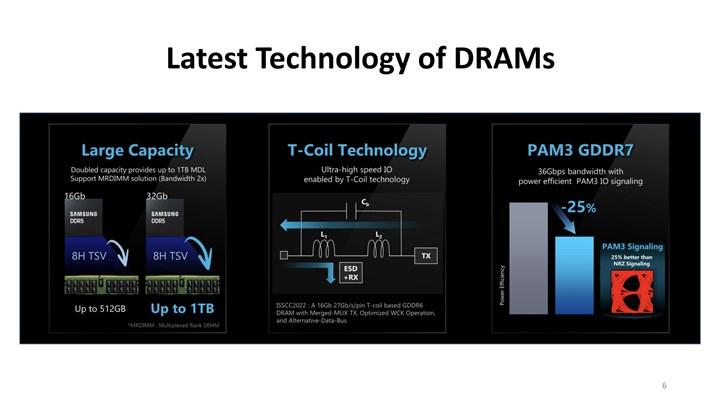 For a while, Samsung had announced new GDDR6W memories that significantly increased both bandwidth and capacity. Samsung also continues to work on the next generation GDDR7 memory.
For a while, Samsung had announced new GDDR6W memories that significantly increased both bandwidth and capacity. Samsung also continues to work on the next generation GDDR7 memory.It seems that the next-generation GDDR7 memory standard will double the bandwidth and density over the current GDDR6. According to the image shared by Ian Cutress, which is stated to be a presentation of Samsung, the semiconductor giant will use the PAM3 signal for 36 Gbps speed in GDDR7 memories.
PAM3 signal will be used
Conventional GDDR6 memory uses NRZ or PAM2 signaling to achieve data rates from 14 Gbps to 24 Gbps. It is worth noting that Intel’s previously announced 80G Thunderbolt interface and USB interface will also use the PAM3 signal. However, PAM4 signal was used in Micron GDDR6X (18 Gb/s and 23 Gb/s) memories in Nvidia RTX 3080 and 3090.
 Traditional NRZ signaling provides a transmission rate of 1 bit per cycle, while PAM4 is known to provide 2 bits per cycle. PAM3 uses a more advanced waveform, increasing this to 3 bits per cycle. According to the image, Samsung says that PAM3 is 25% more efficient than NRZ signaling and therefore GDDR7 will be 25% more energy efficient.
Traditional NRZ signaling provides a transmission rate of 1 bit per cycle, while PAM4 is known to provide 2 bits per cycle. PAM3 uses a more advanced waveform, increasing this to 3 bits per cycle. According to the image, Samsung says that PAM3 is 25% more efficient than NRZ signaling and therefore GDDR7 will be 25% more energy efficient.Data rates will double
On the performance side, in the slide, Samsung refers to a data rate of 36 Gbps. According to this value, GDDR7 will be twice as fast as GDDR6 memory in terms of data rate. Again, based on this data, a typical GPU with a 256-bit memory bus will easily reach 1152 GB/s memory bandwidth while using 36 Gb/s rated GDDR7 memory. High-end GPUs with 384-bit memory interfaces will be able to see 1728 GB / sec. On the other hand, it should be noted that GDDR7 memories are still being developed and it is not yet clear when they will enter the market.